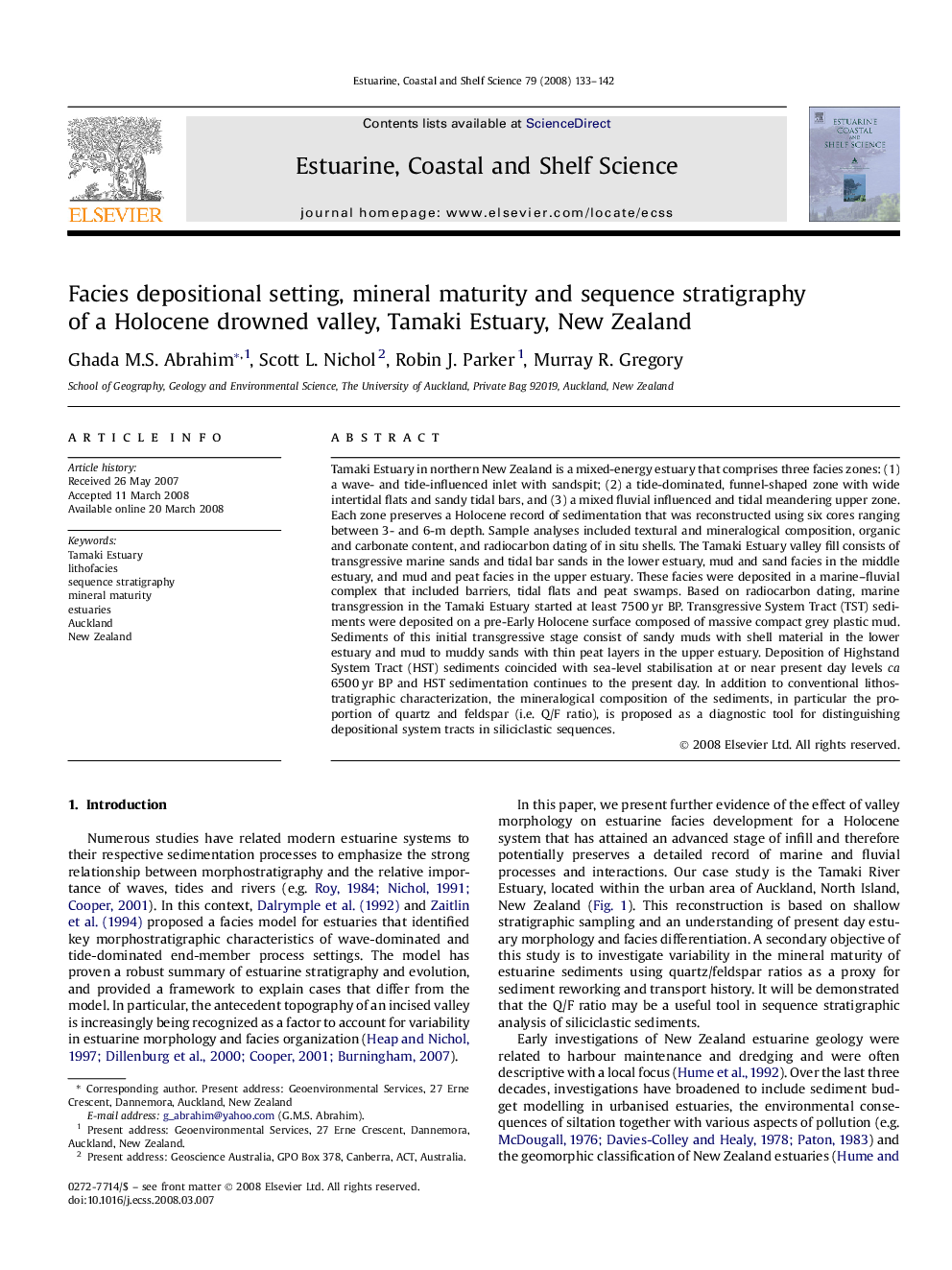| کد مقاله | کد نشریه | سال انتشار | مقاله انگلیسی | نسخه تمام متن |
|---|---|---|---|---|
| 4541573 | 1326730 | 2008 | 10 صفحه PDF | دانلود رایگان |
عنوان انگلیسی مقاله ISI
Facies depositional setting, mineral maturity and sequence stratigraphy of a Holocene drowned valley, Tamaki Estuary, New Zealand
دانلود مقاله + سفارش ترجمه
دانلود مقاله ISI انگلیسی
رایگان برای ایرانیان
کلمات کلیدی
موضوعات مرتبط
مهندسی و علوم پایه
علوم زمین و سیارات
زمین شناسی
پیش نمایش صفحه اول مقاله

چکیده انگلیسی
Tamaki Estuary in northern New Zealand is a mixed-energy estuary that comprises three facies zones: (1) a wave- and tide-influenced inlet with sandspit; (2) a tide-dominated, funnel-shaped zone with wide intertidal flats and sandy tidal bars, and (3) a mixed fluvial influenced and tidal meandering upper zone. Each zone preserves a Holocene record of sedimentation that was reconstructed using six cores ranging between 3- and 6-m depth. Sample analyses included textural and mineralogical composition, organic and carbonate content, and radiocarbon dating of in situ shells. The Tamaki Estuary valley fill consists of transgressive marine sands and tidal bar sands in the lower estuary, mud and sand facies in the middle estuary, and mud and peat facies in the upper estuary. These facies were deposited in a marine-fluvial complex that included barriers, tidal flats and peat swamps. Based on radiocarbon dating, marine transgression in the Tamaki Estuary started at least 7500Â yr BP. Transgressive System Tract (TST) sediments were deposited on a pre-Early Holocene surface composed of massive compact grey plastic mud. Sediments of this initial transgressive stage consist of sandy muds with shell material in the lower estuary and mud to muddy sands with thin peat layers in the upper estuary. Deposition of Highstand System Tract (HST) sediments coincided with sea-level stabilisation at or near present day levels ca 6500Â yr BP and HST sedimentation continues to the present day. In addition to conventional lithostratigraphic characterization, the mineralogical composition of the sediments, in particular the proportion of quartz and feldspar (i.e. Q/F ratio), is proposed as a diagnostic tool for distinguishing depositional system tracts in siliciclastic sequences.
ناشر
Database: Elsevier - ScienceDirect (ساینس دایرکت)
Journal: Estuarine, Coastal and Shelf Science - Volume 79, Issue 1, 10 August 2008, Pages 133-142
Journal: Estuarine, Coastal and Shelf Science - Volume 79, Issue 1, 10 August 2008, Pages 133-142
نویسندگان
Ghada M.S. Abrahim, Scott L. Nichol, Robin J. Parker, Murray R. Gregory,